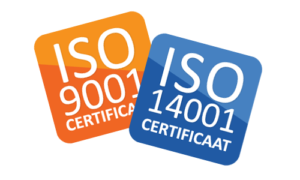Iron oxide nanoparticles/nanopowder are nanoscale crystals of iron oxide (g-Fe2O3, α-Fe2O3 and Fe3O4) with a considerably great surface area and surface-to-volume ratio. Iron oxide has a unique superparamagnetic property with an easy separation method. Considering their physical and chemical specifications, iron oxide nanoparticles have biomedical, environmental and agricultural applications. Iron oxide nanoparticles/nanopowder are advantageous as they can be modified by organic and inorganic agents, antibodies, nonionic detergents, starches, enzymes, proteins, drugs, nucleotides and polyelectrolytes for further applications based on their wide surface chemistry potentials.
Synthesis of Iron Nanoparticles
Several methods have been suggested for the synthesis of iron nanoparticles namely dry processes, microbiological techniques and wet chemistry. Generally, the synthesis methods can be categorized as physical, chemical and biological methods. In the physical method of iron oxide nanoparticle synthesis, the top-down technique is adopted to breakdown the bulky crystals into smaller ones. Nevertheless, the control over the particles size and homogeneity is lost and some particles get sizes that don’t fit in the nanoscales. Some of the physical techniques are laser ablation, ultraviolet irradiation, lithography, ultrasonic fields and aerosol technologies. The chemical synthesis methods are considered the best and most efficient with higher uniformity of particles in nanoscales. These methods are simple and tractable through which the particles shape and composition can be controlled so precisely. Amongst, liquid phase methods, two-phase methods (microemulsion), sol–gel method, gas/aerosol phase method, polyols method, hydrothermal reaction methods and sonolysis are the methods with favorable products. Briefly, the iron oxide nanoparticles are prepared through coprecipitation reaction of Fe2+ and Fe3+ through adding a base. The type of the iron slat used in the synthesis process, ionic strength, pH and the Fe2+/Fe3+ ratio determine the composition, shape and size of the resulting nanoparticles. The biological method of iron oxide nanoparticles synthesis is also advantageous as it fits well in the green chemistry promises through using microbes, bacteria, viruses and fungi in the synthesis process. Such biological methods include intracellular synthesis of nanoparticles by bacteria, extracellular synthesis of nanoparticles by bacteria, biosynthesis of nanoparticles by fungi, intracellular synthesis of nanoparticles by fungi, actinomycete mediated synthesis of nanoparticles, yeast mediated synthesis of nanoparticles and virus mediated biosynthesis of nanoparticles 31.
Surface Modification of Iron Oxide Nanoparticles
With all the advantageous of iron oxide nanoparticles, they suffer from agglomeration when they are left unmodified mainly because of their high-energy surface, van der Waals forces and strong magnetic power. In addition to this, higher concentration of Fe2+ and Fe3+ is considered toxic for organism. However, if the surface of the nanoparticles is modified or functionalized, it is easy to get over these consequences. Modification and functionalization increase the compatibility of the iron oxide nanoparticles and creates hydrophilicity on their surface. Therefore, a careful and smart surface modification strategy can increase the selectivity in delivering a given drug or agent to a particular organ and more importantly, make the iron oxide nanoparticles biocompatible and nontoxic. Following the necessities mentioned above, there have been a lot of efforts towards coating and modifying the iron oxide nanoparticles/ nanoparticles/nanopowder. In biomedical application, the modification is according on the application. It has been found out that proteins, enzymes, antibodies, nucleotides and drugs can bind to magnetic iron oxide nanoparticles. There are reports of coating iron oxide nanoparticles with biomolecules such as lactobiotonic acid, gluconic acid and polyacrylic acid with the resulting homogenous particle size distribution and hydrophilic properties for uses in tissue engineering and liposome coating 1.
Important Factors to Enhance the Efficiency of Iron Oxide Nanoparticles
First of all, chemical precipitation is regarded as the cheapest, simplest and the most effective way to synthesize magnetic iron oxide nanoparticles. Next, the use of economical initial reagents and chemicals can lead to cost-effective final iron oxide nanoparticles for applications in less sensitive purposes. Later, the small size of iron oxide nanoparticles results in high surface area to volume ratio enabling interactions with distinct chemical specious as aqueous and gaseous ones. Finally, it is possible to activate iron oxide nanoparticles through altering the particle shape to make the catalytic site more available. Therefore, reproducible, scalable, durable and dispersible particles with controlled growth, shape and nucleation are significant 1.

